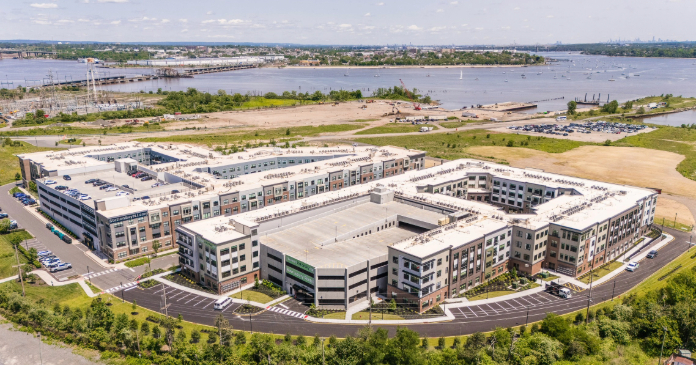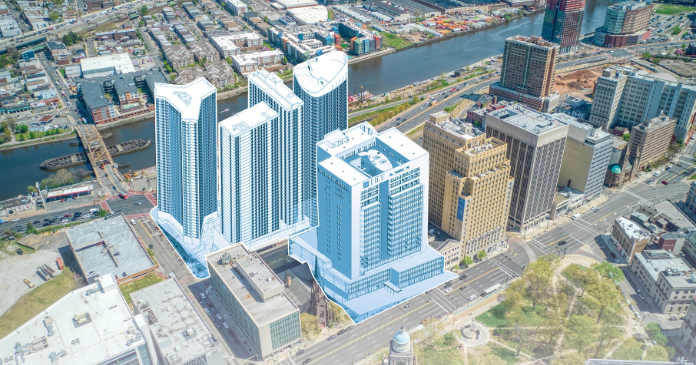Brookside Properties, Klingbeil Capital Management, Southeastern Property Management (SPM) and the Bascom Group are seeing water savings of as much as 39 percent thanks to an all-inclusive high-technology 1.6 gallon flapperless toilet retrofit program by Water-Smart.
The 12-year-old Alabama-based company co-owned by Tom and Stephanie Stallings, offers a three-pronged approach to water conservation that includes a water-usage analysis, installation of low-flow technology, any needed leak repair and water-usage tracking to show proof of reductions.
“We saw a 30 percent reduction in water bills,” said Bascom Regional Director Ryan Akins, after Water-Smart performed its magic at five of 17 assets Bascom purchased in various Texas markets over the past 14 months. The savings were almost immediate and convinced Bascom to roll out the program at assets the company is repositioning in Seattle, Phoenix and Atlanta.
Recovering the cost of utilities — some of the largest operating expenses for property owners — became essential after the energy crisis of the 1970s. It’s now common practice for large apartment owners to pass on those costs to tenants by installing meters at each unit and billing tenants for the exact amount of individual usage or through RUBs (ratio utility billing), an allocation system based on square footage and number of residents per unit.
Those water reimbursement programs can produce up to a 30 percent reduction in usage and allow owners to recoup an average of 80 percent of a community’s water bill. Utility reimbursement became crucial to cutting owners’ costs during the recession years when rents plummeted. But the savings typically are not passed on to tenants. With today’s improved apartment fundamentals that allow owners to push rents, it pays to reduce renters’ water bills to free up cash for further rent increases.
That’s where Water-Smart comes in. Stallings, who refers to himself as Tom the Toilet Man, begins with a water audit, walking 15 to 25 bathrooms using a hand-held measuring device, called a Weir Basket, to determine gallons per minute (gpm) of water flow. He obtains a fixture count, a one-month water and sewer bill to determine water and sewer rates, a people count and an average 12-month occupancy. Water-Smart then prepares an audit that shows the calculated savings and return on investment for the owner.
“For us to be successful, we must bring to the table services and technology unique to the industry,” said Stallings. At the heart of his program are several products by Niagara Conservation, including a gravity-based, flapperless toilet with a patented dump bucket design (the only one of its kind in the world) instead of a typical rubber flapper, a low-flow showerhead and faucet aerators. “We target companies with apartment product built before 1992. Properties built from the 1950s to the 1970s will see the biggest savings after retrofit,” said Stallings.
According to the American Water Works Association, leaks account for around 14 percent of indoor water usage, faucets 16 percent, showers 17 percent, clothes washers 22 percent and toilets around 30 percent, especially those manufactured prior to 1991. In efforts to conserve water over the years, the U.S. government has limited the number of gallons per flush (gpf) on toilets being manufactured. The five-gpf toilet saw its last days of production in 1981, when a 3.5-gpf toilet was mandated. The lifespan of that required level extended to 1991 when new regulations limited toilet manufacturers to 1.6 gpf.
The next evolutionary chapter in toilets will be the H.E.T. (high efficiency toilet), requiring a 1.28-gpf. Those toilets will be required this year by some California municipalities in order for owners to obtain a rebate. Water-Smart will be installing the new 1.28-gpf flapperless toilet at a number of Klingbeil’s communities in Los Angeles.
“The 1.6 gpf flapperless toilet by Niagara has been around for about seven years, but the technology really took off in the last four,” said Stallings. “My price is around $79 per toilet, a bit more than the $55 or $60 price of the least expensive conventional 1.6-gpf toilets. But, in addition to using 54 percent less water than a 3.5- gpf toilet, the flapperless saves on repairs because it has no flapper to leak or replace and doesn’t need to be flushed twice — a common complaint by people using some low-flow toilets,” he said.
In fact, the NAHB gave the flapperless by Niagara its number one ranking on two-piece toilets for quality of flush. The toilet’s 11- inch by 20-inch base, which comes in the standard round-bowl style and an elongated version that is ADA approved, was designed to cover the footprint of most conventional toilets.
“Showerheads are the most sensitive part of the retrofit. Most people hear the words ‘water-saving showerhead’ and they push the panic button, saying, ‘It’s going to drizzle out and it’ll be the size of my thumb.’ The 1.75-gpm Earth showerhead by Niagara is a good-looking product with massage and standard-flow positions and a spray pattern that stays focused,” said Stallings.
“Around 90 percent of the showerheads on the market today provide a 2.5-gpm flow rate, which most people assume is water conservation. But it’s not. It’s the maximum allowed by the federal government. The average person takes an eight-minute shower — that’s the national average — so the 1.75-gpm Earth showerhead saves six gallons of water, or three-quarters of a gallon per minute, over a 2.5-gpm model,” Stallings said.
The final piece of Water-Smart’s retrofit is the installation of Niagara’s 1.5-gpm aerators on faucets in bathrooms and kitchens. Those devices reduce faucet water usage by four gallons per person per day compared to two-gpm standard-flow faucet aerators.
Stallings checks for and repairs leaks and tracks water usage and occupancy for 12 months prior to and after retrofit to show owners how much they are saving on water bills. Water-Smart’s program costs from $169 to $179 per bathroom. The average apartment community has 300 to 400 bathrooms. Averaging 70 toilets a day, Stallings’ six-man installation team is able to install the entire program in six to eight days.
Water-Smart has completed retrofits in 9,000 bathrooms for Klingbeil Capital Management, 7,000 for Tennessee-based Brookside Properties and 5,000 for Alabama-based Southeastern Property Management. A proposal is in the works to retrofit bathrooms in Equity Residential’s 3,643-unit military housing at Fort Lewis in Tacoma, Washington.
“If we come in January, you’ll see a 35 to 40 percent reduction in water and sewer in February. We have ROI paybacks from anywhere from nine to 24 months, depending on how many people are living per unit, as well as the cost of water and sewer in particular regions,” said Stallings. Those are water savings owners and residents both can take to the bank. For more information, email watersmart@charter.net.
















